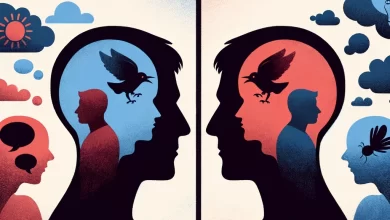The Importance of Understanding Discrimination Law: Protecting Your Rights

In today’s world, the significance of being versed in the nuances of discrimination law cannot be overstated. My journey through understanding this crucial aspect of legal protection began when I first realized the pervasive nature of discrimination in our society. It’s not just about recognizing injustice; it’s about understanding how the law protects us and what we can do if those protections are violated. Discrimination law serves as the bedrock for ensuring fairness and equality in various spheres of life, including employment, education, and access to services.
Delving into discrimination law opened my eyes to its complexity and its role as a shield against unjust treatment. It’s a field that encapsulates the struggle for equality and the ongoing efforts to eradicate biases based on race, gender, age, disability, and more. This realization made me appreciate the layers of protection that the law offers and how it seeks to balance the scales where societal prejudices still hold sway.
Embarking on this exploration, I aimed to unravel the intricacies of discrimination law, not just for myself but to share this knowledge. The goal is to empower individuals with the understanding needed to protect their rights and to stand against discrimination in all its forms. As we journey through this article, we will delve into the types of discrimination, their legal definitions, key legislation, and the steps one can take when faced with discrimination.
Understanding the Different Types of Discrimination
The landscape of discrimination is vast and varied, encompassing several categories that many might not be aware of. Initially, my understanding was limited to the more commonly discussed forms, such as racial and gender discrimination. However, the spectrum of discrimination extends far beyond these, covering areas like age, disability, sexual orientation, and religion, among others. Each type of discrimination presents its own set of challenges and requires a nuanced understanding to navigate effectively.
For instance, age discrimination can occur in the workplace when older employees are overlooked for promotions or development opportunities simply because of their age. Similarly, disability discrimination is not just about physical access barriers but also includes failing to make reasonable adjustments for individuals with disabilities, significantly affecting their quality of life and employment opportunities.
Recognizing these types requires a deep dive into the characteristics that define them, the contexts in which they occur, and the subtle ways they manifest. It was a revelation to see how interconnected and pervasive discrimination could be, affecting virtually every aspect of an individual’s life. This understanding is crucial for identifying discrimination, whether it affects you directly or someone around you.
Discrimination Explained: Meaning and Examples
To grasp the full extent of what discrimination entails, it’s essential to comprehend its definition and see real-world examples. Discrimination, in its broadest sense, refers to the unjust or prejudicial treatment of different categories of people, especially on the grounds of race, age, sex, or disability. This definition encapsulates a range of behaviors, from overt acts of racism or sexism to more subtle forms of prejudice, such as microaggressions or implicit biases.
For instance, consider a scenario where an equally qualified female applicant is passed over for a job in favor of a male applicant based on the assumption that she might not be as committed to her career due to family responsibilities. This example highlights gender discrimination, showcasing how stereotypes can influence decisions and perpetuate inequality.
Another example might involve a person with a physical disability being denied access to a public event because the venue does not have suitable facilities. This not only illustrates discrimination based on disability but also underscores the societal obligation to ensure accessibility for all individuals.
Through these examples, the multifaceted nature of discrimination becomes apparent. It’s not merely about direct actions but also about the systemic structures and attitudes that enable such biases to flourish. Understanding these examples helps in recognizing discrimination in its many forms, paving the way for addressing and combating it effectively.
The Legal Definition of Discrimination
The legal landscape defines discrimination with precision, encapsulating both direct and indirect forms. Direct discrimination refers to situations where someone is treated less favorably than another person in a similar situation, because of a protected characteristic. Indirect discrimination, on the other hand, occurs when a seemingly neutral policy or action disproportionately disadvantages a group of people who share a protected characteristic.
This legal framework is designed to capture the breadth of discrimination’s manifestations, ensuring that the law can effectively address both blatant and subtle forms of prejudice. It’s a definition that has evolved over time, reflecting the growing understanding of discrimination’s complexities and the need for robust protections.
Understanding this legal definition was a turning point for me. It provided a clear lens through which to view incidents of discrimination, assessing them not just morally but also through the prism of legal standards. This understanding is crucial for anyone looking to navigate discrimination law, whether as a victim, advocate, or ally.
Key Legislation Protecting Against Discrimination
Navigating through the landscape of discrimination law, one encounters various pieces of legislation designed to protect individuals from unfair treatment. In the United States, for example, the Civil Rights Act of 1964 stands as a pivotal law prohibiting discrimination on the basis of race, color, religion, sex, or national origin. This landmark legislation marked a significant step forward in the quest for equality and justice.
Similarly, the Americans with Disabilities Act (ADA) of 1990 provides crucial protections for individuals with disabilities, ensuring their right to access employment, education, public accommodations, and more. These laws, alongside others like the Age Discrimination in Employment Act (ADEA) and the Equal Pay Act, form a robust framework aimed at eradicating discrimination in various facets of society.
Each piece of legislation not only offers protections but also establishes the legal recourse available to those who face discrimination. They empower individuals to stand up against unfair treatment, providing a pathway to seek justice and remedy. Understanding these laws is a cornerstone of protecting oneself and advocating for others in the face of discrimination.
The Impact of Discrimination on Individuals and Society

The repercussions of discrimination extend far beyond individual incidents, affecting the well-being of communities and the fabric of society itself. On a personal level, facing discrimination can have profound psychological effects, including stress, anxiety, and a diminished sense of self-worth. These impacts underscore the urgent need for effective legal protections and societal interventions.
Beyond the individual, discrimination undermines societal cohesion, perpetuating divisions and fostering environments where inequality thrives. It hampers economic progress by sidelining talented individuals and limiting the diversity of perspectives in decision-making processes. The ripple effects of discrimination affect everyone, directly or indirectly, emphasizing the collective responsibility to address and combat these injustices.
Acknowledging the widespread impact of discrimination was a crucial step in my journey. It highlighted the importance of not only understanding discrimination law but also actively participating in efforts to promote equality and inclusiveness. This realization reinforced my commitment to leveraging legal knowledge in pursuit of a more just society.
Steps to Take if You Experience Discrimination
Encountering discrimination can be a disheartening and isolating experience. However, armed with knowledge and awareness, individuals can take actionable steps to address and challenge unfair treatment. The first step is to document the incident thoroughly, capturing details about what happened, when, and who was involved. This record can be invaluable in pursuing any legal or formal complaints.
Next, it’s crucial to understand the avenues available for recourse. This might involve filing a complaint with relevant authorities, such as the Equal Employment Opportunity Commission (EEOC) in the United States, or seeking legal advice to explore the possibility of litigation. Many organizations and advocacy groups offer support and guidance to individuals facing discrimination, providing resources to navigate these processes.
Taking action against discrimination is not only about seeking justice for oneself but also about contributing to broader efforts to challenge and eradicate these practices. By standing up against unfair treatment, individuals play a part in fostering a more equitable society.
Resources for Understanding and Navigating Discrimination Law
For those looking to deepen their understanding of discrimination law or find support in navigating these challenges, a wealth of resources is available. Legal texts, online platforms, and nonprofit organizations offer insights into the intricacies of discrimination law and provide guidance on how to address issues of unfair treatment.
One invaluable resource is the website of the EEOC, which offers detailed information on discrimination types, legal protections, and how to file a complaint. Similarly, legal aid societies and civil rights organizations provide free or low-cost assistance to those facing discrimination, offering a lifeline to individuals who might otherwise feel powerless.
Equipping oneself with knowledge and utilizing these resources can make a significant difference in addressing discrimination. They serve as tools for empowerment, enabling individuals to protect their rights and seek justice in the face of unfair treatment.
The Role of Legal Professionals in Fighting Against Discrimination
Legal professionals play a pivotal role in the fight against discrimination, serving as advocates for justice and equality. Their expertise is crucial in navigating the complexities of discrimination law, providing guidance to those affected, and challenging unjust practices through the legal system. Lawyers specializing in civil rights and discrimination cases bring a wealth of knowledge and experience to bear, offering a beacon of hope for individuals facing discrimination.
Beyond individual cases, legal professionals also contribute to broader efforts to combat discrimination, participating in advocacy and reform initiatives. Their insights and expertise can influence policy development, ensuring that laws reflect the evolving understanding of discrimination and its impacts.
The commitment of legal professionals to these causes underscores the importance of the legal system in protecting rights and promoting justice. Their work not only addresses individual cases of discrimination but also contributes to the ongoing struggle for a more equitable society.
Conclusion: Empowering Individuals Through Knowledge of Discrimination Law
Understanding discrimination law is more than an academic exercise; it’s a crucial aspect of navigating the world and protecting oneself and others from unfair treatment. This journey through the complexities of discrimination law has underscored the power of knowledge as a tool for empowerment and change. By comprehending the legal protections available and the steps one can take in the face of discrimination, individuals are better equipped to stand up for their rights and contribute to the fight against injustice.
The path to a society free of discrimination is long and fraught with challenges, but it’s a journey worth taking. Armed with knowledge and the support of the legal community, we can face these challenges head-on, working together to build a world where equality and justice are not just ideals but realities for all.
In the spirit of empowering others with this knowledge, I encourage readers to delve deeper into discrimination law, understand their rights, and take action against injustice. Together, we can make a difference, protecting our rights and those of future generations against discrimination.






